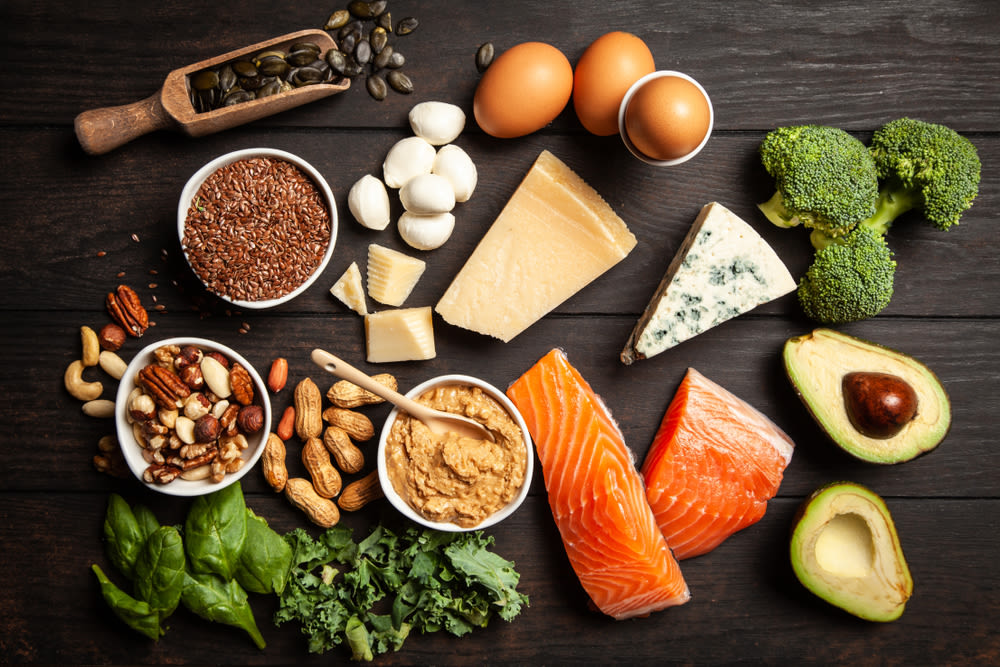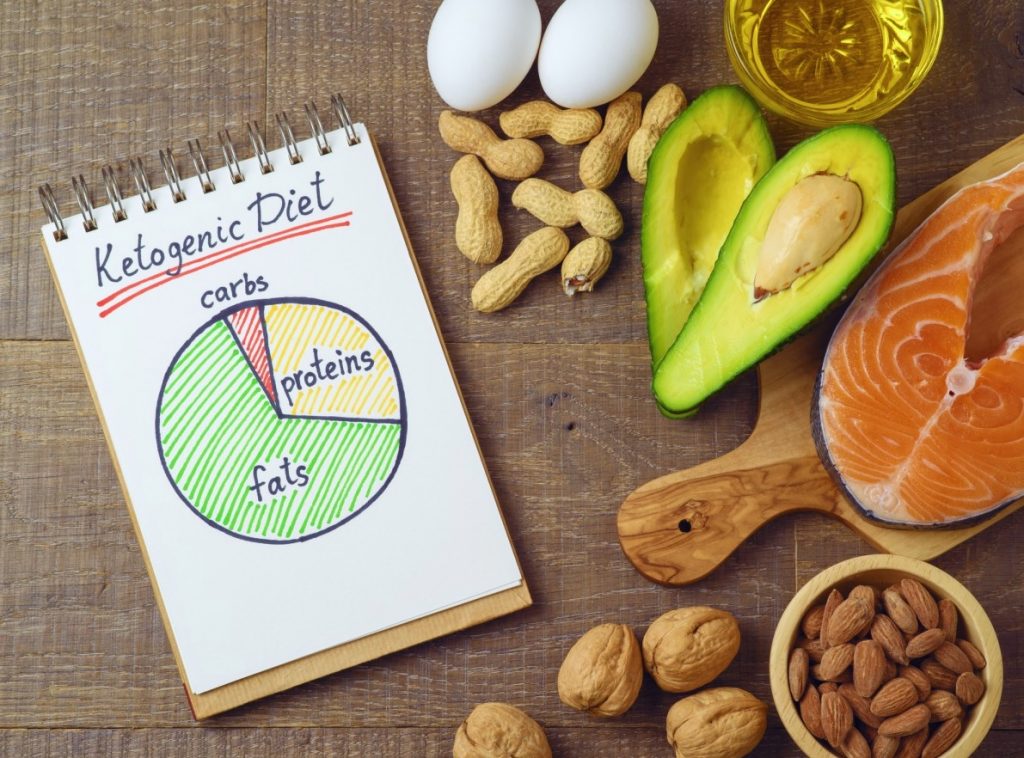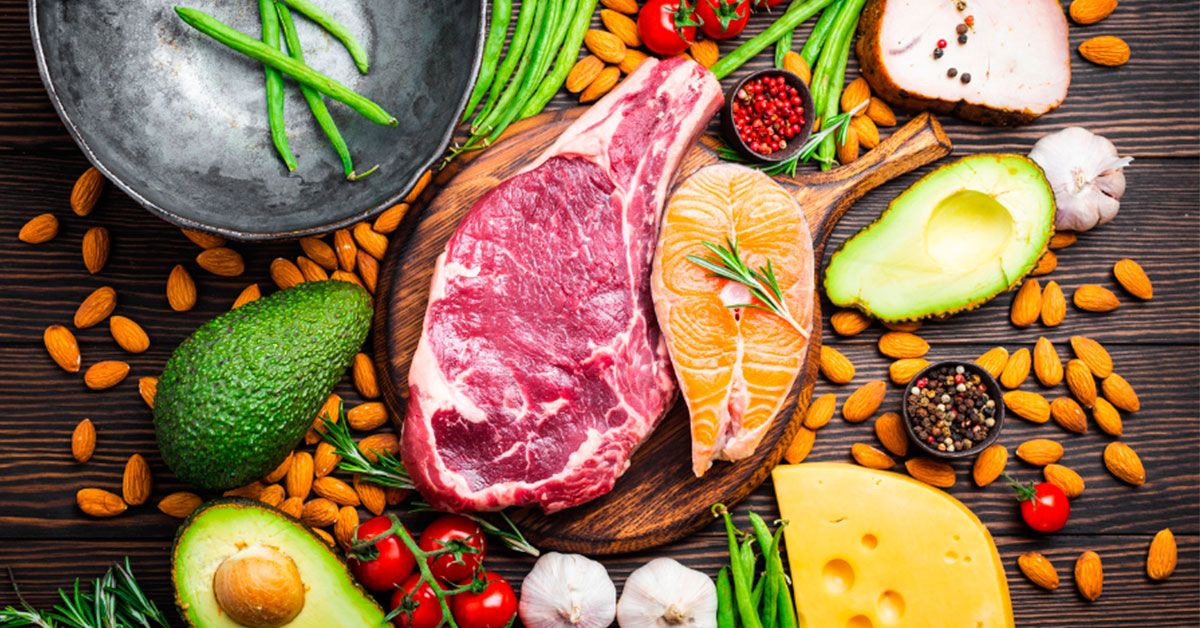The Keto Diet Debate: Beneficial Lifestyle Shift or Passing Trend?

Introduction: Unpacking the Keto Phenomenon
Have you noticed the keto diet popping up everywhere—from Instagram influencers to your coworker’s lunch break chatter? This high-fat, low-carb diet promises rapid weight loss, sharper focus, and even therapeutic benefits. But is it a sustainable lifestyle or just another fad? In this guide, we’ll break down the science, real-life experiences, and expert insights behind keto to help you decide if it’s right for you. Whether you’re curious about “how to start the keto diet for beginners” or wondering “is the keto diet safe long-term,” we’ve got you covered with facts, not hype.
What Is the Keto Diet?
Definition and Origins
The ketogenic diet began in the 1920s as a medical treatment for epilepsy in children. Today, it’s a mainstream weight-loss strategy that shifts your body from burning carbs to fats and ketones—a metabolic state called ketosis.
Key Components and Macros
Here’s the keto breakdown:
- 70-80% fats: Think avocados, olive oil, and butter.
- 15-20% protein: Eggs, chicken, and fish fit here.
- 5-10% carbs: Goodbye bread—hello leafy greens.
The goal? Starve your body of carbs to kickstart fat-burning.

Variations of Keto
Not all keto is the same. The ketogenic diet has evolved into several distinct variations, each tailored to different lifestyles, goals, and preferences. While they all share the core principle of drastically reducing carbohydrate intake to trigger ketosis—a metabolic state where the body burns fat for fuel instead of glucose—their approaches diverge to accommodate a range of needs. Here’s a closer look at the main types:
- Standard Keto Diet (SKD): The classic and most widely recognized version, SKD is the foundation of the keto movement. It typically follows a macronutrient ratio of about 70-75% fat, 20% protein, and just 5-10% carbs, limiting daily carb intake to roughly 20-50 grams. This forces the body into ketosis, making it a go-to for weight loss enthusiasts and those seeking metabolic benefits. It’s straightforward but rigid, emphasizing foods like avocados, butter, eggs, and leafy greens while banning starchy carbs and sugars.
- Cyclical Keto Diet (CKD): Designed with athletes and bodybuilders in mind, CKD introduces strategic “carb-loading” days into the mix. The idea is to spend five or six days in strict ketosis, followed by one or two days of higher carb intake—sometimes up to 400-600 grams—to replenish glycogen stores in muscles. This variation aims to balance the fat-burning benefits of keto with the energy demands of intense physical performance. It’s not for beginners, though; timing and discipline are critical to avoid derailing ketosis.
- Targeted Keto Diet (TKD): A middle ground between SKD and CKD, TKD is popular among fitness buffs who need a quick energy boost without fully abandoning ketosis. It allows for small, calculated doses of carbs—usually 20-50 grams—consumed right before or after workouts. These carbs, often from fast-digesting sources like fruit or dextrose, provide fuel for exercise while minimizing disruption to fat-burning. TKD is less extreme than CKD but still requires precision to stay effective.
Beyond these mainstays, other offshoots exist—like the High-Protein Keto Diet, which bumps up protein intake (up to 30-35% of calories) for those focused on muscle preservation, or the Lazy Keto approach, where people track carbs loosely without obsessing over macros. Each variation reflects keto’s flexibility, adapting to everything from weight loss goals to athletic performance to casual experimentation.
Why It’s So Popular
Keto’s meteoric rise isn’t a fluke—it’s a perfect storm of science, celebrity hype, and tangible results. Celebrity endorsements have played a massive role: think Kim Kardashian dropping pounds post-pregnancy or Halle Berry touting keto for managing her diabetes. Athletes like LeBron James have also name-dropped it for performance boosts, while influencers flood Instagram with keto-friendly recipes—think fat bombs and cauliflower crust pizzas. This visibility has turned keto into a cultural phenomenon, amplified by media buzz from outlets like Vogue and Men’s Health, which often frame it as a revolutionary lifestyle, not just a diet.
But it’s not all Hollywood glamour. Keto stands out from predecessors like Paleo or Atkins with its laser focus on ketosis, a measurable state confirmed by blood, breath, or urine tests. Atkins, for instance, also cuts carbs but doesn’t mandate ketosis, while Paleo emphasizes whole foods without the same strict macro rules. Keto’s promise of rapid fat loss—often 2-10 pounds in the first week, thanks to water weight and glycogen depletion—keeps people hooked. Studies, like those in the Journal of Clinical Endocrinology & Metabolism, suggest it may also improve insulin sensitivity and curb hunger by stabilizing blood sugar, adding a layer of scientific credibility to the hype.
The diet’s adaptability helps, too. Whether you’re a busy parent batch-cooking keto casseroles or a biohacker tweaking macros with an app, there’s a version that fits. Online communities on Reddit and X buzz with success stories—before-and-after pics, “NSV” (non-scale victory) posts about energy spikes, and debates over the best MCT oil. This grassroots enthusiasm, paired with slick marketing (keto snacks now line supermarket shelves), has cemented its status. Yet, critics argue the hype outpaces the evidence—long-term studies are sparse, and the restrictive nature trips up many. Still, keto’s blend of quick wins and celebrity sheen keeps it thriving.
The Science Behind Keto
How Ketosis Works
Ketosis is the metabolic magic that powers the ketogenic diet, and it all hinges on slashing carbohydrate intake to a bare minimum—typically 20-50 grams per day, depending on your body size, activity level, and goals. For reference, that’s less than what’s in a single banana or a slice of bread. When carbs are this scarce, your body can no longer rely on glucose—its usual go-to fuel derived from carbohydrates. Instead, the liver steps in as the hero, breaking down stored fat (and dietary fat) into molecules called ketones through a process called ketogenesis. These ketones—primarily beta-hydroxybutyrate, acetoacetate, and acetone—become an alternative energy source, fueling your brain, muscles, and organs.
The shift isn’t instant. It usually takes 3-7 days of strict low-carb eating to deplete glycogen stores (the backup glucose stashed in your liver and muscles) and kickstart ketosis. Factors like exercise, fasting, or your pre-keto diet can speed this up—or slow it down if you’re sneaking extra carbs. Once you’re there, signs of ketosis often emerge: reduced hunger (thanks to ketones’ appetite-suppressing effects), a metallic taste in your mouth, or a subtle fruity breath odor from acetone. Some experience the infamous “keto flu”—a temporary slump of fatigue, headaches, or irritability as the body adjusts to fat-burning mode. Tools like blood ketone meters (aiming for 0.5-3.0 mmol/L) or urine strips can confirm you’ve crossed the threshold, though the latter are less precise over time.
This fat-to-fuel switch is rooted in human evolution—think of it as a survival hack from our hunter-gatherer days, when carbs weren’t always on the menu. Today, it’s harnessed deliberately, with research (like studies in The American Journal of Clinical Nutrition) showing ketosis can enhance fat oxidation and stabilize blood sugar. For keto fans, it’s not just about weight loss—it’s about tapping into a primal energy system.
Ketosis vs. Ketoacidosis
The terms sound similar, but they’re worlds apart—mixing them up is a common rookie mistake. Here’s the breakdown:
- Ketosis: A safe, controlled, and natural metabolic state where ketone levels rise modestly to power the body. It’s the goal of the keto diet, triggered by low carbs or fasting, and it’s tightly regulated by your physiology. Healthy ketone levels in ketosis hover between 0.5 and 3.0 mmol/L, posing no harm—your body uses what it needs and flushes the rest. It’s a feature, not a bug, of human metabolism, and anyone with a functioning pancreas can handle it.
- Ketoacidosis: A rare and life-threatening condition where ketone levels skyrocket (often above 10 mmol/L) alongside uncontrolled blood sugar. It’s almost exclusively a risk for people with type 1 diabetes, whose lack of insulin lets glucose and ketones spiral out of control, turning blood acidic. Symptoms—like vomiting, rapid breathing, or confusion—are severe and demand emergency care. For the average keto dieter, even one gorging on bacon and butter, ketoacidosis isn’t a concern—your insulin keeps things in check.
The confusion stems from the shared “keto” prefix, but context is everything. Nutritional ketosis is deliberate and benign; ketoacidosis is a medical crisis. Dieters sometimes face raised eyebrows from skeptics who blur the lines, but science is clear: a well-executed keto diet doesn’t flirt with danger. Still, if you’re diabetic or on meds, a doctor’s green light is wise before diving in.

Health Benefits Backed by Science
The ketogenic diet’s appeal isn’t just anecdotal—research backs up several of its touted perks, from shedding pounds to sharpening the mind. Here’s what the data says:
- Weight Loss: Keto’s fat-burning reputation holds water. A 2019 study in the Journal of Obesity found that participants on a ketogenic diet lost more weight than those on low-fat plans, even when calories were matched. The secret? Ketones suppress appetite—possibly by tweaking hunger hormones like ghrelin—while the high fat and protein combo boosts satiety. Plus, ketosis ramps up metabolism slightly, with research in The American Journal of Clinical Nutrition showing increased energy expenditure as the body converts fat to fuel. Early water weight loss (from glycogen depletion) adds a quick win, often 2-10 pounds in the first week, fueling motivation.
- Mental Clarity: Beyond the scale, keto fans swear by a brain boost, and science offers clues why. Ketones provide a steady energy stream to the brain, bypassing glucose spikes and crashes. A 2020 study in Neurology suggested ketones might enhance cognitive function, especially in older adults, by stabilizing neural energy. Users often report sharper focus and less “brain fog”—think of it like switching from flickering candlelight to a reliable LED. Small trials, like one in Neurobiology of Aging, even hint at memory gains, though larger studies are needed to lock this down.
- Therapeutic Potential: Keto’s roots trace back to the 1920s as an epilepsy treatment, and it’s still a go-to for drug-resistant cases—studies show it can cut seizure frequency by 50% or more in kids (Epilepsia, 2018). Today, research is branching out. A 2021 paper in Frontiers in Aging Neuroscience explored keto’s promise for Alzheimer’s, suggesting ketones could bypass the brain’s glucose-processing glitches. For type 2 diabetes, trials (Diabetes Therapy, 2018) highlight improved insulin sensitivity and lower HbA1c levels. Even cancer and Parkinson’s are on the radar, with early lab studies probing how ketosis might starve tumor cells or protect neurons—though these are still in the hypothesis stage.
Risks to Watch For
Keto isn’t all rosy—its strict rules bring trade-offs, and experts urge caution:
- Nutrient Gaps: Slashing carbs often means skimping on fiber-rich fruits, whole grains, and veggies, which can tank levels of vitamins like B (think folate from grains) and C (hello, citrus), plus minerals like magnesium and potassium. A 2020 Nutrients review flagged low fiber as a gut health risk, potentially leading to sluggish digestion or microbiome imbalances. Supplements or careful food swaps—like swapping berries for bananas—can help, but it takes planning.
- Long-Term Concerns: The high fat intake—sometimes 70-80% of calories—raises red flags for heart health. A 2020 American Heart Association report warned that saturated fats (from butter, bacon, coconut oil) could spike LDL cholesterol, straining arteries over time. Studies are mixed: some show no harm if weight drops, but a 2021 Circulation analysis tied long-term keto to higher cardiovascular risk in some groups. Kidney strain from excess protein and bone health (due to calcium loss) are also on researchers’ radar, though evidence is patchy.
| - Short-Term Side Effects: The transition to keto can feel like a slog. “Keto flu”—a mix of fatigue, headaches, and irritability—hits many in week one as electrolytes dip and the body recalibrates. Constipation is another gripe, thanks to low fiber, while acetone in ketones can leave breath smelling fruity or metallic (keto breath). These usually fade within weeks, but they’re enough to test resolve—popping an electrolyte tab or chugging broth can ease the ride.
How Long Do People Stick With It?
Keto’s intensity makes it a short-term fling for many. Surveys, like one from Nutrition & Metabolism (2022), peg the average duration at 3-6 months, though some diehards stretch it to years. Why do people tap out? Carb cravings—pizza, pasta, that warm sourdough smell—often win. Social hurdles loom large too: dodging bread baskets at dinners or explaining “no thanks” to birthday cake gets old fast. Cost is another kicker—grass-fed meats, organic avocados, and keto-branded snacks (think $10 almond flour packs) add up, especially compared to cheap staples like rice or potatoes. Data from X posts and Reddit threads echo this: users lament the grind of meal prep and the hit to their wallets. Still, those who stick it out often cite the payoffs—weight loss, energy, or medical wins—as worth the hassle, at least for a season.

Keto vs. Other Diets
| Diet | Carb Limit | Focus | Sustainability |
| Keto | 5-10% | Ketosis | Moderate |
| Paleo | Moderate | Whole foods | High |
| Atkins | Low initially | Protein + fat | Moderate |
| Vegan | High | Plant-based | High |
Keto shines for fast fat loss but lags in long-term ease compared to vegan or Paleo.
How to Start the Keto Diet for Beginners
Jumping into keto can feel like flipping a switch on your eating habits, but a smart start sets you up for success. Here’s a step-by-step guide to ease in, stock up, and stick with it:
- Cut Carbs Gradually: Going from a standard 200-300 grams of carbs a day to keto’s 20-50 gram target overnight can shock your system—and willpower. Instead, ease in: start at 100 grams daily (swap white bread for a small sweet potato, skip soda), then taper to 70 grams by day three (ditch the potato, halve fruit), hitting 20-50 grams by week’s end. This ramps down glycogen gently, dodging the worst of the “keto flu” slump. Trackers like Carb Manager can pinpoint hidden carbs—think sauces or that “healthy” granola. Aim for 5-10% of your calories from carbs (e.g., 20-50g on a 2,000-calorie diet).
- Stock Up: A keto-ready kitchen is your lifeline. Load up on staples: eggs (cheap, versatile protein), nuts (almonds or macadamias for low-carb crunch), coconut oil (a fat-packed cooking base), and leafy greens (spinach or kale for fiber and micronutrients). Add avocados (potassium-rich fat bombs), grass-fed butter or ghee (for cooking or coffee), and fatty cuts like salmon or ribeye. Skip the rookie mistake of buying processed “keto” bars—many sneak in maltitol, a sugar alcohol that can stall ketosis. Hit the store with a list: think 70-75% fat, 20% protein, 5-10% carbs as your grocery guide.
- Track Macros: Precision matters in keto—guessing won’t cut it. Apps like MyFitnessPal or Cronometer let you log every bite, breaking down fat, protein, and carbs to hit that 70-75/20/5-10 ratio. For a 2,000-calorie day, that’s roughly 155-165g fat, 100g protein, and 20-50g carbs. Start simple: weigh your food for a week (a $10 digital scale works) to learn portions—like 3oz of chicken (20g protein) or 1 tbsp of olive oil (14g fat). Over time, you’ll eyeball it, but early tracking catches slip-ups—like that “low-carb” dressing with 5g sugar per squirt.
- Hydrate: Water is your keto MVP. Aim for 8-10 cups (64-80oz) daily—more if you’re active—to counter the diuretic effect of glycogen loss, which flushes water and electrolytes fast. Low carbs can zap sodium, potassium, and magnesium, leaving you foggy or crampy (hello, keto flu). Sip bone broth (salty, nutrient-rich) or add a pinch of Himalayan salt to your glass. Coffee and tea count, but dodge sweetened lattes. Pro tip: keep a reusable bottle handy—dehydration’s a silent saboteur in week one.
- Meal Prep: Planning kills chaos. Whip up a week’s worth of meals to dodge carb temptation. Try this daily lineup: Breakfast—Bacon-Egg Cups (prebake muffin tins with bacon, crack an egg in each, 20 minutes at 375°F—fatty, portable); Lunch—Grilled Chicken Salad (4oz chicken thigh, spinach, half an avocado, olive oil dressing—15 minutes to toss together); Dinner—Steak with Asparagus (6oz ribeye seared in butter, 10 spears roasted with garlic—keto comfort in 30 minutes). Batch-cook on Sundays: shred cauliflower for “rice,” roast a tray of Brussels sprouts, or blend a keto smoothie (coconut milk, berries, MCT oil). Keep snacks simple—pork rinds, cheese sticks, or a handful of walnuts.
Bonus Tips for Newbies
Start with a 3-day “keto reset”: clear out pantry carbs (donate that pasta), sip water like it’s your job, and expect a funky breath phase—it passes. Test ketosis by day five with urine strips (cheap at $8 a pack) or just trust the hunger drop. Join an X keto group for recipes and moral support—real-time tips beat Googling alone. Most importantly, listen to your body: if fatigue lingers past two weeks, tweak fat or electrolytes with a pro’s help. Keto’s a marathon, not a sprint—pace yourself.
Conclusion: Should You Try Keto?
Keto’s a polarizing diet—hailed as a game-changer by some, dismissed as a fad by others. Weighing the pros and cons can help you decide if it’s worth a shot or better left on the table. Here’s the final tally:
Pros
- Quick Fat Loss: Keto’s knack for rapid results is hard to ignore. Studies like those in the Journal of Obesity (2019) show it torches fat faster than low-fat diets, often dropping 2-10 pounds in the first week (water weight included) and more over months. The appetite-curbing power of ketones keeps you full on fewer calories—perfect if your scale’s been stuck.
- Mental Boost: Beyond the body, keto fans rave about clearer thinking. Ketones deliver steady brain fuel, potentially cutting through glucose-driven fog. Small trials (Neurology, 2020) back this up, hinting at sharper focus and even mood lifts—think of it as a cognitive tune-up, especially if sugar crashes zap your afternoons.
- Medical Potential: From epilepsy control (a century-old win) to emerging hope for diabetes, Alzheimer’s, and more (Frontiers in Aging Neuroscience, 2021), keto’s therapeutic edge intrigues doctors. If you’re wrestling with insulin resistance or neurological quirks, it’s a lane worth exploring—with a pro’s nod.
Cons
- Nutrient Risks: The carb clampdown can leave gaps—fiber, vitamins (B and C), and minerals (magnesium, potassium) often take a hit. A 2020 Nutrients review warns of gut woes or fatigue if you don’t strategize. You can offset this with supplements or keto-friendly swaps (berries, nuts), but it’s extra work.
- Tough to Maintain: Keto’s strictness wears people down. Surveys peg average stints at 3-6 months—cravings for bread, social awkwardness (pass the rolls?), and the cost of grass-fed meats or MCT oil derail many. X posts lament the grind: “Day 90, dreaming of pizza.” It’s a lifestyle shift, not a quick fix.
- Not for Everyone: Pregnant women, kidney patients, or sprint athletes might crash and burn—keto’s demands clash with specific needs (Journal of Sports Sciences, 2021). Even healthy folks can falter if they hate fat-heavy meals or lack prep time. It’s less universal than its hype suggests.
Your Next Step
Keto can work wonders if it aligns with your goals—fast fat loss, mental edge, or medical tweaks—and your lifestyle—time to cook, budget for avocados, patience for “flu.” Not sold? Test-drive it: commit to a 30-day trial, track your energy (more pep or total drag?), weight (down 5 pounds or stalled?), and ketones (strips or gut feel). Log it in an app like MyFitnessPal to spot patterns. Chat with a doctor or dietitian first, especially if you’re on meds or juggling health quirks—safety trumps zeal.
Still hesitant? Alternatives might fit better without keto’s tight leash. The Mediterranean diet swaps bacon for olive oil and fish, piling on veggies and whole grains—heart-friendly and easier to sustain (Circulation, 2021). Intermittent fasting skips the macro math, leaning on timing (16:8 or 5:2) to mimic keto’s fat-burning perks with less restriction. Even a low-carb hybrid (50-100g daily) could bridge the gap—flexible yet effective. The trick? Pick what sticks. Keto’s not the only path to “better”—it’s just one with a loud megaphone.

FAQs: Your Keto Questions Answered
- How quickly can I see results?
Most notice weight loss in 1-2 weeks, but ketosis kicks in within days. - Is it safe for kids or pregnant women?
No—experts say it’s too restrictive for growing bodies or pregnancy. - Can keto be a forever diet?
Possible, but tough. Many switch to low-carb after initial goals. - What about heart health?
Mixed data—healthy fats help, but saturated fats may harm over time. - Vegan keto options?
Yes! Think tofu, nuts, seeds, and coconut oil—just plan carefully.
